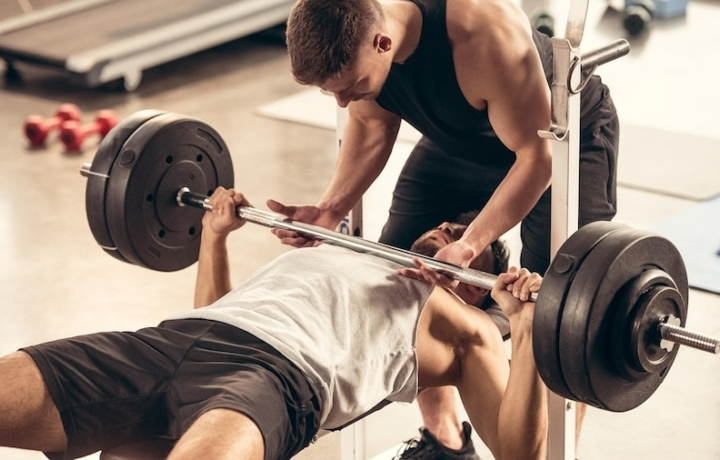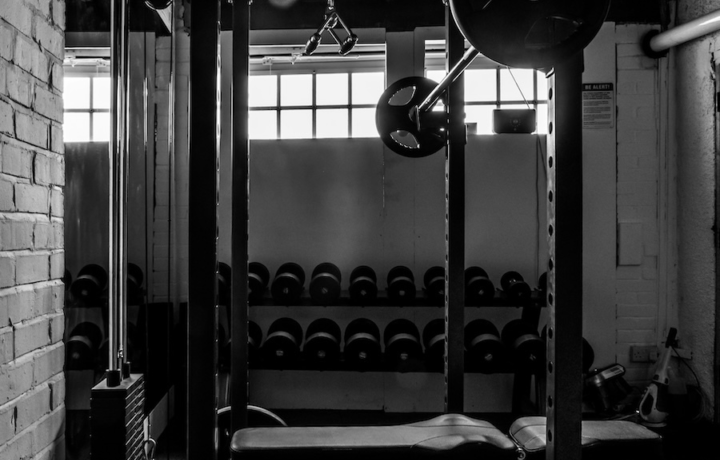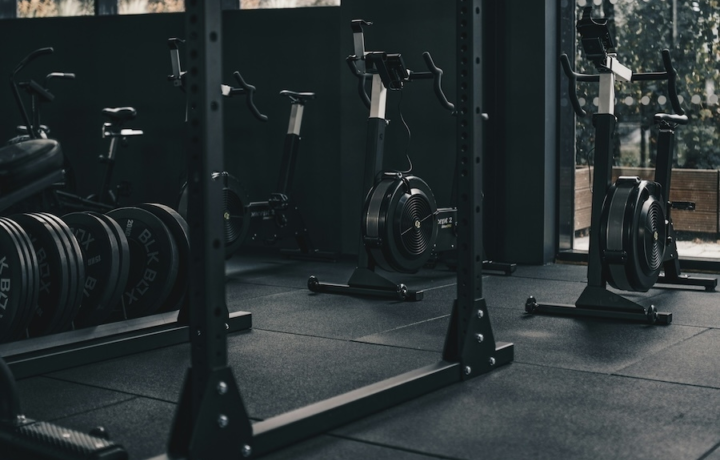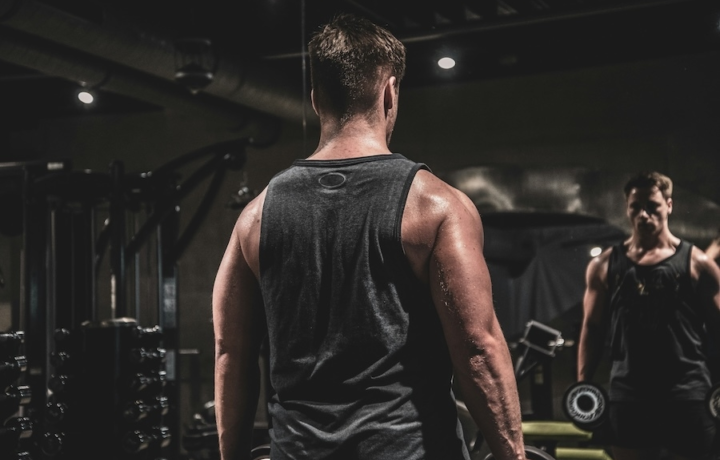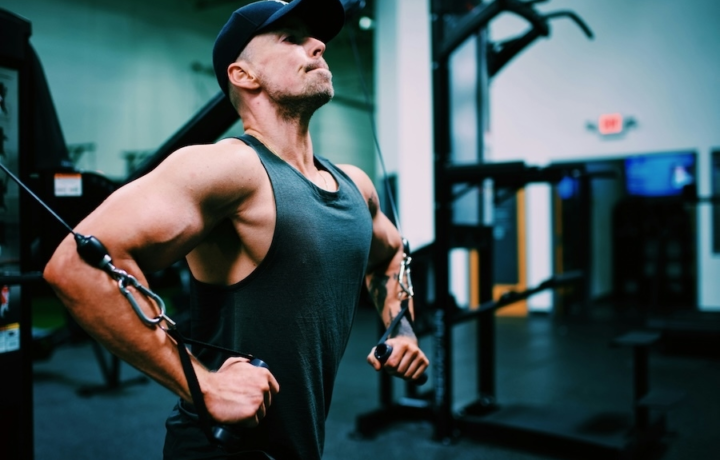Exercise
Barbell Standing Military Press

Barbell Standing Military Press
Calculate your one rep max
How to Perform
- Set up a barbell in a squat rack at shoulder height, then grip the bar with hands slightly wider than shoulder-width apart using an overhand grip.
- Remove the bar from the rack and step back, positioning your feet shoulder-width apart with your core braced and chest up.
- Hold the barbell at your upper chest with elbows pointing down and forward, maintaining a neutral spine and slight bend in your knees.
- Take a deep breath in, brace your core, and press the weight overhead by extending your arms while keeping your back straight and avoiding excessive arching.
- As you press, slightly tuck your chin back to allow the bar to clear your face, maintaining a neutral neck position throughout the movement.
- Continue pressing until your arms are fully extended overhead with the barbell aligned with your shoulders, midfoot, and hips.
- Exhale at the top of the movement while keeping your core tight and shoulders packed down away from your ears.
- Lower the weight under control to the starting position at your upper chest, allowing your elbows to bend naturally forward as you inhale for the next repetition.
Important information
- Keep your core tight throughout the entire movement to protect your lower back and prevent excessive arching.
- Avoid leaning back or using momentum to push the weight overhead, as this can place unnecessary stress on your lower back.
- If you experience shoulder pain, try using a slightly wider grip or consider switching to dumbbells which allow for more natural movement patterns.
- Lock your knees slightly rather than keeping them completely straight to maintain stability while pressing.
1 Rep Max Calculator
Estimate your one-rep max for Barbell Standing Military Press

Barbell Standing Military Press
Calculate your one rep max
Exercise Details
Primary Muscles
Muscle Groups
Mechanic
Risk Areas
1 Rep Max Calculator
Estimate your one-rep max for Barbell Standing Military Press
Built for progress
Take the guesswork out of training
Create personalized AI-powered workout plans that evolve with you. Train smarter, track every rep and keep moving forward, one workout at a time.






The Barbell Standing Military Press stands as a cornerstone strength movement in both powerlifting and bodybuilding regimens, demanding respect for its ability to build impressive shoulder strength and upper body development. This intermediate compound exercise primarily targets the front deltoids while significantly engaging the triceps as crucial secondary movers, creating that coveted boulder shoulder appearance when performed consistently over time.
Unlike many isolation movements, the military press challenges your entire body as a unit, requiring core stability, proper spinal alignment, and full-body tension to execute effectively. The exercise's origins trace back to military physical training programs—hence the name—where soldiers would demonstrate strength by pressing a weighted bar overhead with strict form and discipline.
For strength enthusiasts, the standing military press serves as one of the fundamental overhead pressing movements, developing raw power through the shoulders, upper chest, and triceps while simultaneously building stability through the core and lower body. Many powerlifters incorporate this lift as an accessory movement to improve bench press performance, as stronger shoulders often translate to a more powerful bench.
Bodybuilders particularly value the military press for its ability to add significant mass to the anterior deltoids, creating that shelf-like appearance at the front of the shoulders that contributes to an impressive V-taper physique. The triceps engagement also promotes arm thickness, enhancing overall upper body proportions.
What makes the barbell standing variation particularly challenging is the strict requirement for core stability and balance throughout the movement. Unlike seated variations, the standing position demands full-body coordination and prevents any cheating through back arch or momentum, making each rep a true test of shoulder strength and overall stability.
For optimal progress, most strength coaches recommend incorporating this movement early in your shoulder training session when energy levels are highest, allowing for maximal loading and proper technique to fully capitalize on this powerful upper body developer.
FAQ - Barbell Standing Military Press
The military press primarily targets the anterior (front) deltoids while also engaging the lateral deltoids, triceps, upper chest, and trapezius muscles. Your core, including abs and lower back, works isometrically to maintain stability throughout the movement.
When performed with proper form, the standing military press is generally safe for healthy shoulders. Ensure you maintain a neutral spine, avoid excessive arching, and start with lighter weights to master technique. If you have existing shoulder issues, consult a healthcare professional before attempting this exercise.
The three most common mistakes are excessive back arching to push the weight up, flaring the elbows too wide (which stresses the shoulders), and failing to create full-body tension through the core and legs. Keep your core braced, elbows at about 45 degrees, and maintain a neutral spine throughout the movement.
Progress by first mastering perfect form with lighter weights, then gradually increase load using small increments (2.5-5 pounds). Incorporate periodization by alternating between strength phases (lower reps, higher weight) and volume phases (higher reps, moderate weight) every 4-6 weeks for continued development.
The standing military press engages more core muscles and requires greater full-body stability than the seated version, making it slightly more challenging but potentially more beneficial for overall strength development. The seated variation allows for slightly heavier loads and may be preferable for those with lower back issues or balance concerns.



